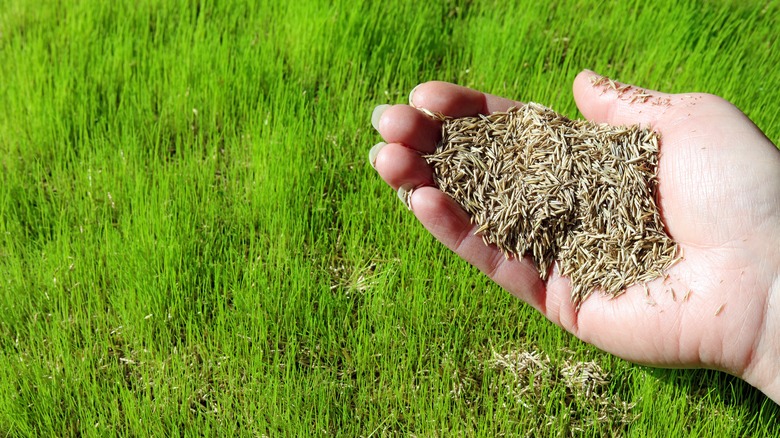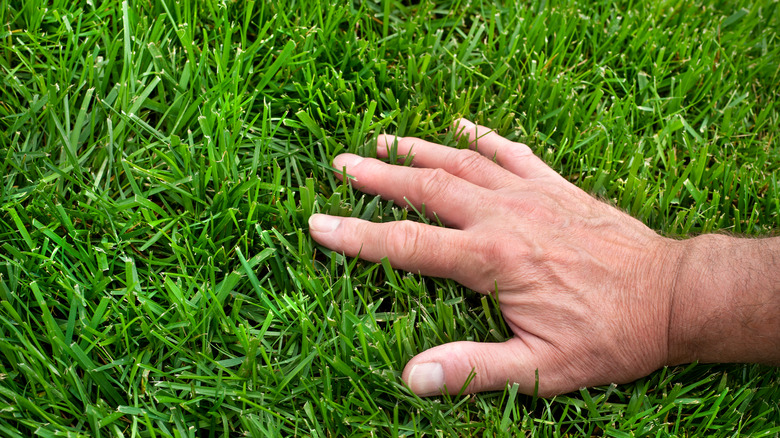Perennial Ryegrass Seed Alternatives That Germinate Quickly For A Lush Lawn
Perennial ryegrass (Lolium perenne) is found in lawns all across the United States. In cooler climates, it's a popular cool-season turf grass for permanent lawns. In warmer climates, it's often overseeded into existing grass as a winter lawn. It provides a fast-growing green turf to enjoy while the warm-season grasses that make up the permanent lawn are dormant.
However, there are some drawbacks to using perennial ryegrass in either situation. In permanent lawns, the bunch-forming grass can make your lawn look patchy, and it might take multiple seasons of reseeding to fill the spaces between clumps. Meanwhile, you'll be fighting the weeds that take over those bare spots. In a winter lawn, the perennial might not die back early enough, or at all. In spring, mature ryegrass will compete with young warm-season grasses for the same nutrients, water, and sunlight.
Fortunately, there are some good alternatives to perennial ryegrass that will give you the lush lawn you want without the same drawbacks. For permanent lawns in cooler climates, a variety of fescues may be better suited to the task. If you want to establish a winter lawn quickly, there are a couple of rye species that work better than perennial ryegrass. No matter which alternative you choose, the best time of year to overseed your lawn is about two to four weeks before the first frost. If you've missed this date, try dormant lawn seeding in winter to plant a permanent lawn.
Fast-germinating alternatives to perennial ryegrass
If you're trying to establish a permanent lawn, consider planting one or more types of fescue grasses. Also cool-season grasses, fescues are known to germinate quickly, and some can become established in as little as four or five weeks. Tall fescue (Festuca arundinacea) is similar in appearance to perennial ryegrass. It's also one of the hardier cool-season turf grasses, boasting better tolerance of drought, shade, and foot traffic than either ryegrass or other fescues. For shadier yards in cooler climates, creeping red fescue is a more shade-tolerant alternative to ryegrass.
However, there are some important disadvantages to consider before growing tall fescue grass or planting red fescue grass seed. For one, their fast growth rate means you may need to mow your lawn more often to keep it at your preferred height. And, while they might be more tolerant of stressors than ryegrass, fescues are still cool-season grasses that won't do well in hot climates.
If you're overseeding your lawn for winter, consider cereal rye (Secale cereale). This annual winter grain can be used as a temporary lawn, with less risk that it will persist or become weedy in warmer months. Cereal rye seeds can germinate in temperatures as low as 33 degrees Fahrenheit and, once established, it can tolerate winters as cold as -30 degrees Fahrenheit as well as mowing. With a species this cold-hardy, even gardeners further north could use cereal rye as a winter lawn.

